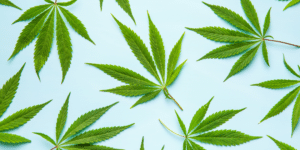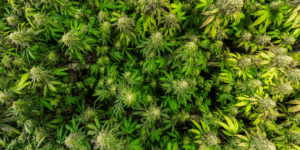Cannabis Strains, Cultivation
Feminised vs. Regular Cannabis Seeds: Which Is Right for You?
Your choice between feminised and regular cannabis seeds bears significant importance, as each seed type brings distinct characteristics, merits, and drawbacks. All these aspects greatly influence your overall growing experience. In this post, we embark on a thorough examination of the differences between feminised and regular cannabis seeds. We will also take a closer look at their respective advantages and disadvantages and delve into their growth requirements.
Contents
Feminised vs. Regular Cannabis Seeds: Understanding the Basics
The Difference between Feminised and Regular Cannabis Seeds
Feminised and regular cannabis seeds differ primarily in terms of gender. In the natural world, cannabis plants can be either male or female, and it is the female plants that produce the sought-after flowers with cannabinoids like THC and CBD. With traditional regular cannabis seeds, there is an almost equal chance of growing into male or female plants.
In contrast, feminised cannabis seeds are selectively bred to ensure that the resulting plants are almost always female. This is accomplished by manipulating the genetics of the parent plants.
Feminised Seeds:
– almost always female plants
Regular Cannabis Seeds:
– Almost equal chance of growing into male or female plants
Is There a Visible Difference between Feminised and Regular Cannabis Seeds?
Visually, it is challenging to distinguish between feminised and regular cannabis seeds. Both types usually have a similar appearance: small, teardrop-shaped, and with a hard outer shell. The seeds often feature mottled patterns or speckles, and they come in a variety of shades, including brown, gray, and black.
The only reliable way to distinguish whether a seed is feminised or regular is to check the packaging or purchase from a reputable seed bank like ExpertSeeds. In most cases, the difference is not visually apparent, and even experienced growers cannot tell them apart by sight alone.
Advantages of Feminised Seeds
- Guaranteed Female Plants: The most significant advantage of feminised seeds is that they are virtually guaranteed to produce female plants. This ensures that growers can focus solely on cultivating the flowering, cannabinoid-rich buds without worrying about males that do not produce flowers and can pollinate the females, reducing bud quality.
- Maximized Crop Efficiency: With feminised seeds, growers can utilize their cultivation space more efficiently since all plants are female and produce buds. This maximizes the yield and makes the best use of resources.
- Consistent Results: Feminised seeds lead to more consistent results in terms of growth patterns, cannabinoid content, and aroma. This predictability is beneficial for both novice and experienced growers.
Disadvantages of Feminised Seeds
- Cost: Feminised seeds are generally more expensive than regular seeds due to the breeding process and the higher demand for them.
- Risk of Genetic Homogeneity: In some cases, the genetic homogeneity of feminised strains can lead to a lack of diversity and resilience, making the crop more susceptible to pests and diseases.
Advantages of Regular Seeds
- Genetic Diversity: Regular seeds offer genetic diversity as they can produce both male and female plants. This diversity can be valuable for breeding projects or selecting the best mother plants for cloning.
- Preservation of Genetic Diversity: For those interested in preserving the genetic diversity of specific strains, regular seeds allow for the cultivation of both male and female plants, ensuring a continued supply of genetic material for future breeding.
Disadvantages of Regular Seeds
- Males Must Be Identified and Removed (although this depends on your cultivation project): The primary disadvantage of regular seeds is that approximately 50% of the plants grown from these seeds will be males. Males do not produce the desired buds and can pollinate females, potentially lowering the quality and cannabinoid content of the crop.
- Space and Resources: Growing regular seeds requires dedicating space, time, and resources to plants that may not ultimately contribute to the final yield, making it less efficient compared to growing from feminised seeds.
Growing Feminised Seeds
Growing from feminised seeds is often considered more straightforward. With minimal concerns about male plants, growers can focus their attention on nurturing the female plants and maximizing bud production. Some key steps when growing feminised seeds include:
- Germinating seeds in a controlled environment.
- Providing the right light, temperature, and humidity conditions.
- Regularly monitoring plants for signs of stress or disease.
- Adjusting the growing conditions as needed.
- Harvesting when the plants reach maturity.
Growing Regular Seeds
Growing from regular seeds requires more vigilance, as growers must carefully monitor plants to identify and remove males. The following steps can help ensure a successful crop when growing regular seeds:
- Identify male plants during the pre-flowering stage by looking for the presence of pollen sacs.
- Remove male plants promptly to prevent pollination.
- Create an optimal growing environment for female plants, maintaining the right light, temperature, and humidity conditions.
- Monitor female plants for any signs of hermaphroditism (the development of male and female reproductive parts on the same plant) and remove such plants to prevent pollination.
Are Autoflowering Cannabis Seeds feminised or regular?
Autoflowering cannabis seeds are a distinct category separate from regular and feminised seeds. They are not categorised as either regular or feminised seeds. The key feature of autoflowering seeds is their ability to automatically transition from the vegetative stage to flowering based on their age, rather than relying on changes in light cycles. This unique trait is due to the introduction of cannabis ruderalis genetics into the breeding process, and it sets autoflowering seeds apart from both regular (photoperiod) and feminised seeds. Autoflowering seeds can produce male or female plants just like regular seeds, but they have a different flowering trigger mechanism.
Choosing between feminised and regular cannabis seeds (and autoflowering cannabis seeds) depends on individual preferences, goals, and resources. Feminised seeds offer reliability and efficiency in crop production, while regular seeds provide genetic diversity and opportunities for breeding.
























